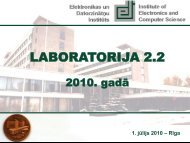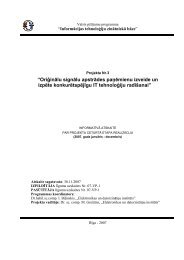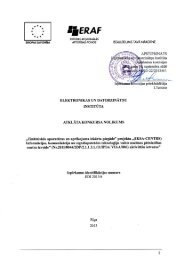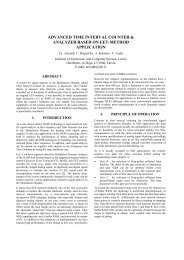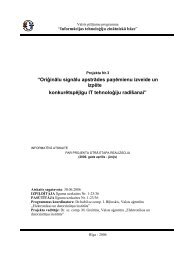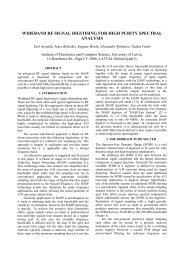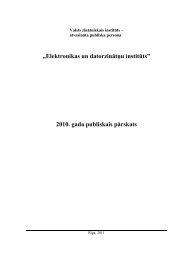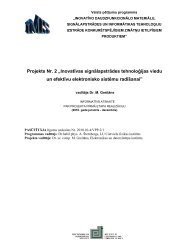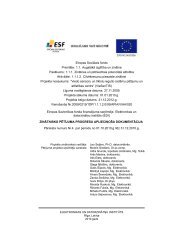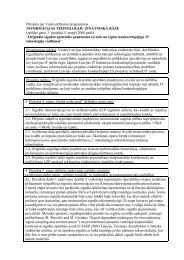A032-ET - International Laser Ranging Service
A032-ET - International Laser Ranging Service
A032-ET - International Laser Ranging Service
Create successful ePaper yourself
Turn your PDF publications into a flip-book with our unique Google optimized e-Paper software.
Event Timer <strong>A032</strong>-<strong>ET</strong>resulting in too large delay of receiving the first time-tags by the <strong>ET</strong>-client. In some casesthis may cause unwanted problems with real-time operation of the <strong>ET</strong>-client. In suchcases it is recommended to decrease the M value as far as possible. For example, ifR=0.5 KHz and M=25, the time M/R=50 ms and period T M may be about 45 ms.The <strong>A032</strong>.2 option provides cyclical measurement of events that come at the separate inputsof the <strong>ET</strong>-device in a strict order. Specifically, in the beginning of each cycle the EventTimer measures a single Start-event coming at the Input A of the <strong>ET</strong>-device, and onlythen - a number of Stop-events (up to 12,000) coming at the Input B (Fig.3). The Stopeventsare registered over internal gate. The gate delay T Dj is programmable by the <strong>ET</strong>clientin a wide range with 10 ns LSD resolution.T CINPUT ARegistered Start eventsINPUT BT DjRegistered Stop eventsT D(j+1)GatingDatareadingDataprocessingand sendingT WT RTo TCPTo TCPFig.3. Time diagram illustrating the measurement provided by the A031.2 optionUnlike the <strong>A032</strong>.1 option, in this case the <strong>ET</strong>-device at first accumulates TD-blocks in theFIFO memory during some user-defined waiting period T W , starting from Start-eventregistration. During this time the <strong>ET</strong>-server processes TD-blocks read out from the <strong>ET</strong>devicein previous cycle, and sends the corresponding time-tags to the <strong>ET</strong>-client. Then the<strong>ET</strong>-server interrupts the event registration, reads the currently accumulated TD-blocksand allows starting the next similar cycle. In any case the amount of TD-blocks read bythe <strong>ET</strong>-server does not exceed the user-defined value M (from 1 to 12,000). The waitingperiod T W can be defined in a wide range with a 1 ms step.During the waiting period T W the <strong>ET</strong>-server can receive a command from the <strong>ET</strong>-client torestart the measurement with modified gate delay. In this case the next measurementcycle will be performed with a new gate delay. For example, the restart commandcontaining a modified gating parameter can be cyclically sent by the <strong>ET</strong>-client in responseto each received batch of timing data. In this way online cycle-to-cycle controllable gatingis possible. However it should be taken into account that the TCP/IP network may producesome unexpected delays for real-time data exchange, resulting in episodic loss ofsynchronism in such interactive operation at high (more than tens of Hz) repetition rate ofmeasurement cycles.The minimum available cycle duration T C is defined by time period of data processing (thatshould be less than the waiting period T W ) and time period T R of data reading. Total timeof these operations depends on the amount of TD-blocks that the <strong>ET</strong>-server reads andprocesses. The time additionally needed for network interactions depends on the networkperformance and its actual load. These things should be taken into account to choose theparameters T W and M so that they are well matched with the specific measurementconditions.8



